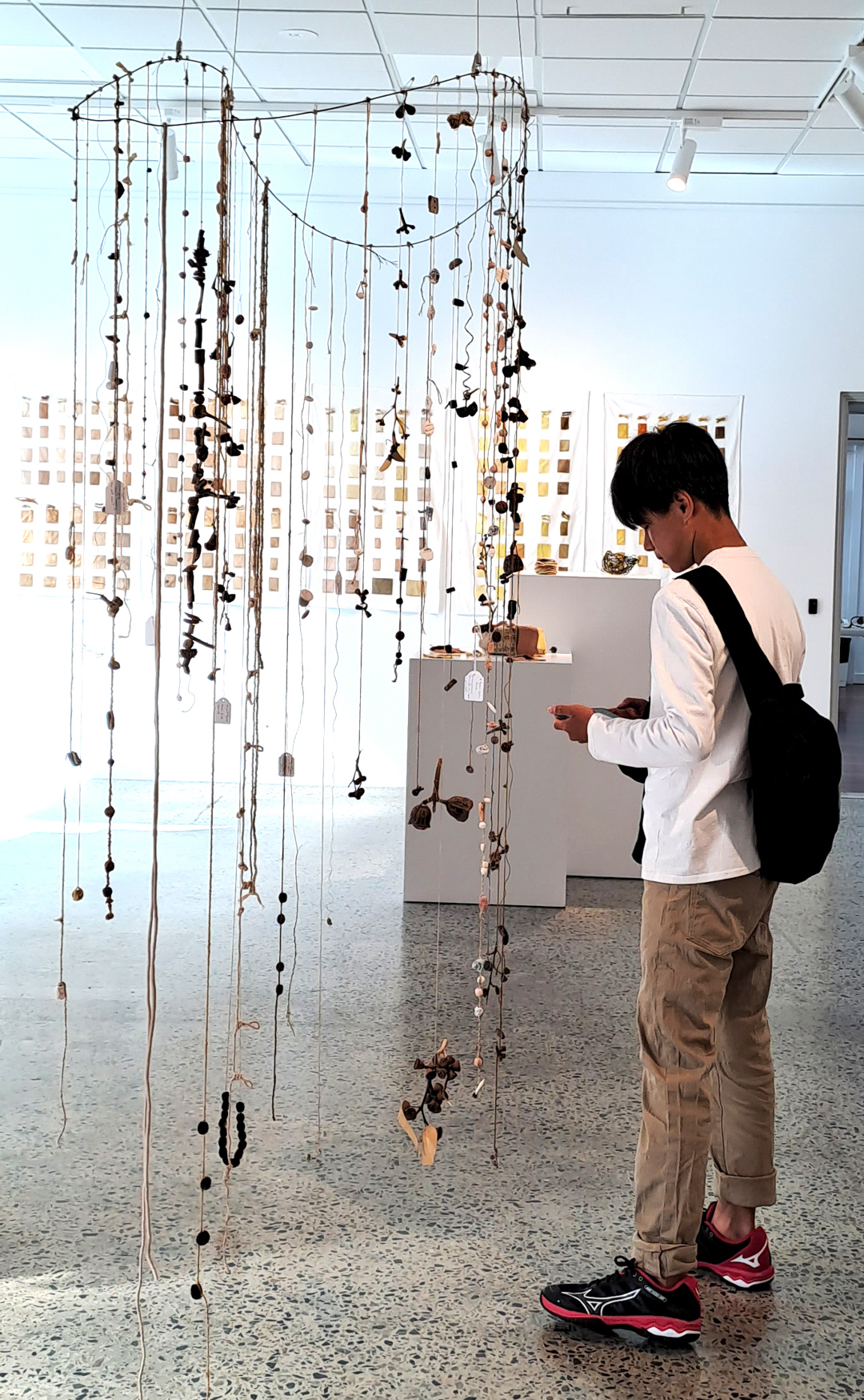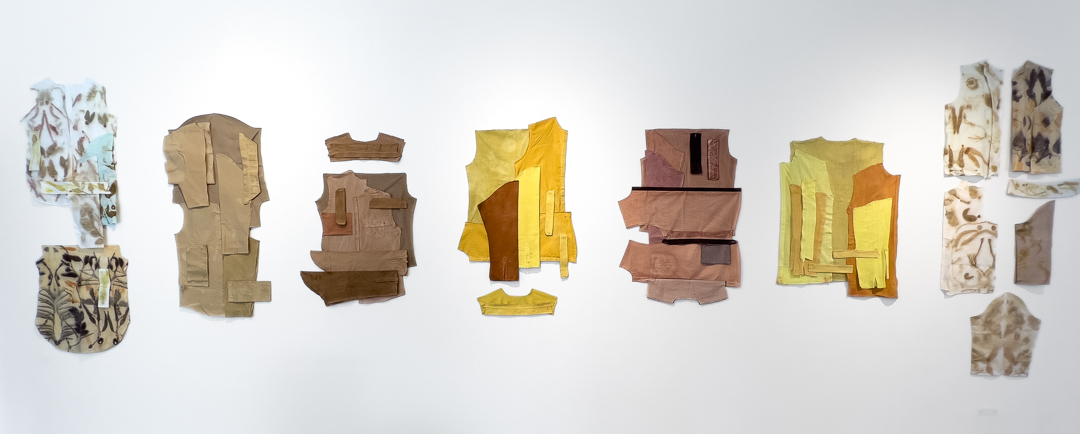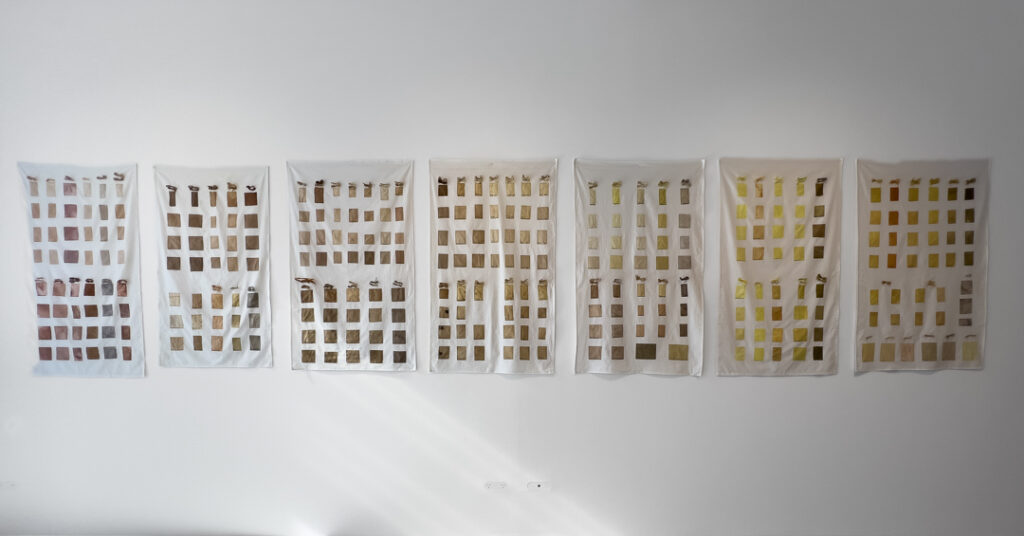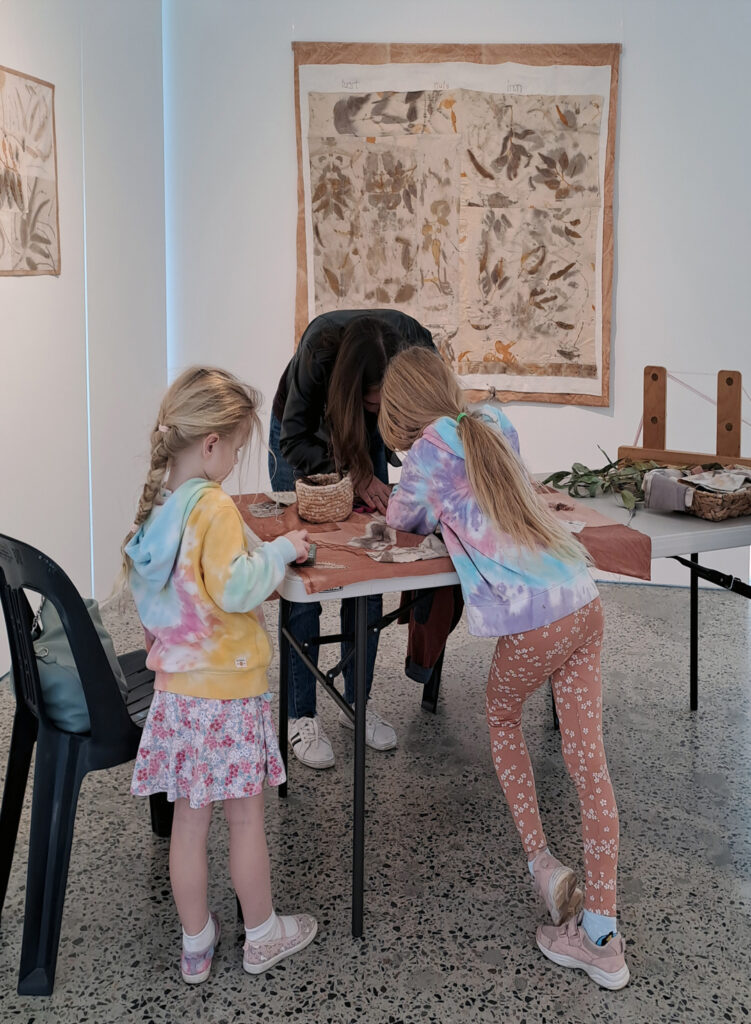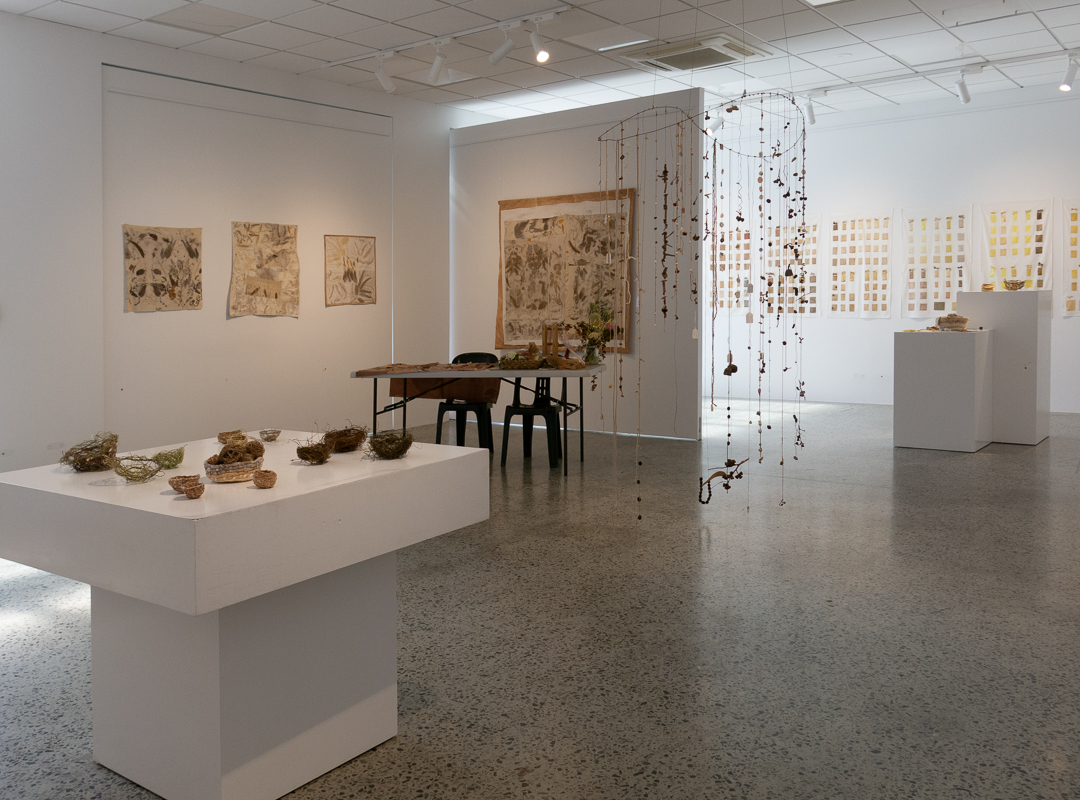
Perdita Phillips visits Annette Nykiel’s exhibition Slow-Making Locally, a collection of slowly-made ecological objects
I am a visitor to Rockingham country (coming from near Walyalup) and want to thank the traditional custodians of the Binjareb and Whadjuk, Nyoongar people here where we stand. To the north of the arts centre is Derbal Nara (Cockburn Sound) and the long crocodile tail of Garden Island. To the south is Lake Richmond, Naragebup, which we will return to later.
I have explored Nykiel’s work through the perspective of four things: time, complexity, action and local.
Time
Slow-making is, as its name implies about using slow processes, and most often simpler technologies. It involves the participant slowing down as well, and employing skills often relegated to craft and the feminine, still (I might say) sidelined in the contemporary art world today! But it is more. It is sensitivity to materials – what they are trying to tell us. It is a recognition of the ecological cost of a high oil, high capitalism, and high waste lifestyle. It is about living sustainably. It is a general sensitivity and commitment to the temporal. Time can be the time of plants—slow growers 400 years old that have seen massive changes since 1829—or fast growers that complete their flowering cycles every year.
In the exhibition, Nykiel used a variety of techniques of fabric dyeing, weaving, string-making, assembling and stitching, combined with botanical dyeing from plant materials sourced from the local environment. All these activities take time.
Your time, as an art viewer was asked for in this exhibition: you were asked to take time to look at each artwork. For example, hidden in Accounting for biodiversity: tuart gum country one of the notes says “Ecosystems are changing. Who is creating the soil now?”
Slow-making is also not just looking backwards to the past, but also about critical, hopeful futures, as seen from the here and now of the present. How can we adapt to the circumstances that present to us: climate change, biodiversity loss, species extinction? Made from op-shop shirts dismembered and dyed, the work how do we put things back together? records the very different dye colours possible. I look at this and I see parcels of land that have been cut up—farmland, urban bushland, housing.
Another phrase found somewhere in the Slow-Making Locally: “Every body is a multi-species organism. How many have gone without us knowing?”
Complexity
That brings us to complexity. I remember (from my time as an environmental scientist) many years ago how easy it was to quickly eradicate the CFCs which were the leading cause of the hole in the Ozone layer. There was a global treaty, and immediate improvements occurred once the main causes were identified. Now things seem so much harder. We are confronted by issues in society and the environment that do not have simple solutions. Technological fixes may work but the issue might be so much bigger, or multiple fixes are needed, or fixes have unintended consequences somewhere else—or more commonly technology is not enough—these are complex knots of individual behaviours, society, money, finances, vested interests—giant, global processes and feedback loops.
Consider the resonant titles: artworks called jarrah gone missing, history of grazing. Another: A measure for flora at Lake Richmond.
- Experimenting with Colour – whole and detail
In the work Experimenting with Colour, the grid of finely differentiated colours on each of these samplers is laid out like the windows of the high-rise apartments that are popping up all over Perth. It would be easy to say that these are faceless, but Nykiel has asked us to look slowly and closely—to perceive the subtle variations. These are actually tests of different materials from different plants, using cotton, linen and silk, and systematically trialling different mordants. So it is a giant, evolving plant database—a library of colours from different treatments. Each window therefore tells a different story. Look closely at the annotations. Overall, just consider the amount of time taken to do all of these tests. It also reminds us of the art and science crossovers that Annette and some of her collaborators have.
Alas, despite this systematisation, the world of botanical dyeing has so many variables. The same plant species, a different part of the plant, a different location, a different season—subtle variations—all add to the complexity of the process.
Complexity seems at this point in time to be more than black and white or a simple yes and no, this way or that way, and all of the artworks here invite you to look-in-complexity—to “stay with the trouble” (as ecofeminist thinker Donna Haraway says). It is a commitment to living with uncertainty, a critical hope that is yes- but yes, and… yes, and… more.. is always required: trust in the uncertain future.
Action
This was not a static exhibition. Some artworks were works in progress. The archive of treatments in Experimenting with Colour will be added to by Nykiel in the future. In one area you were invited to contribute to the fabric works whose stitches record the push and pull of slow making. “Take a moment or two… please feel free to add a few stitches” the instructions say. Watch how small actions add up to significant effects. See what a difference exchange and collaboration make.
As has been described, there was an awful lot of time absorbed in the creation of the works in this show which is somewhat hidden in the final results. But I also see other subtle things—Kirlian auras, bar graphs, Chinese ink mountains, doublings, pairings, references to skin surfaces—twistings, traces, tactility.
Local
Wind and fall: the majority of the materials that Annette used were sourced locally—through walks around Naragebup (Lake Richmond) and the surrounding streets—from weeds such as soursob (sweet-and-sour grass we called it as kids) and Coreopsis grown in her mum’s garden: slowing down and noticing when plants are flowering when they are making new growth and using what is provided and gifted to the slow maker. Windfall: branches rent by hungry parrots; picking materials that the wind has riven from the trees. Slowing down and sensing and acknowledging the other animals and entities that we share this world with, of looking at weed and non-weed. Nothing is made without attention to place.
In addition to the invitation to stitch, there was a range of workshops associated with the exhibition, extending its engagement out into the world. These included Street Stitching Drop In session facilitated by Deidre Robb, Slow-Making Drop In Session with Dianne Strahan and Annette Nykiel, and Coiling and Felt Beauty facilitated by Martien Van Zuilen. I ran an Introduction to Cyanotype workshop, a slow photography technique, and also two swampwalks at Lake Richmond, which were all about experiencing place with listening—and all your senses.
At the opening, we brought in some leaves of the tuart and wanil (peppermint tree) from the park just outside and invited the audience to be active—touch and smell. The proposition—if you were brave—to bite into the taste of the peppermint: complex, local, time-full and action.
Annette would like to thank her special human collaborators, Helen Coleman, Dianne Strahan, Jan and Jon Cornish, Clare Stroud and Jude van der Merwe. Visit annette-nykiel-artist.com and follow @slow_maker
Annette Nykiel Slow-Making Locally, 19 July to 13 August 2023, Rockingham Arts Centre, Western Australia.
About Perdita Phillips
Dr Perdita Phillips lives and works near Walyalup (Fremantle). She has been an environmental artist since 1991. Her creations often begin with listening and walking in places. In 2023 she was ART ON THE MOVE/Art Gallery of WA artist-in-residence at the Museum of the Goldfields and won the Open – Film & video category of the 2023 Northern Beaches Environmental Art & Design Prize for the video Wheatbelt anticipatory archive II. Currently, she is working on a commission for the City of Joondalup about natural histories in urban areas. Visit www.perditaphillips.com and follow @perditaphillips

